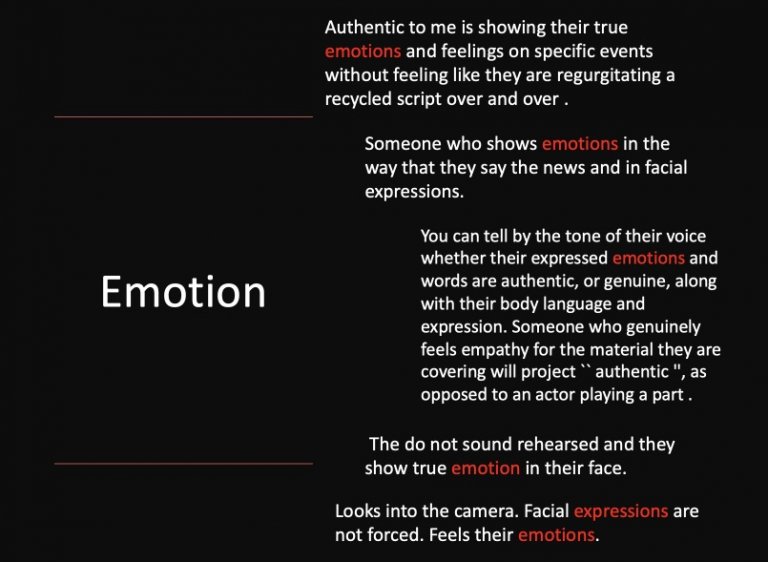Tip
When Russia invaded Ukraine, this live hit featuring CNN’s Clarissa Ward went viral. Viewers were moved by her willingness to stop her narrative and help an elderly woman up the hill. It demonstrated a kind of empathy and authenticity they respect and value. But from a delivery standpoint — in this and in all of the phenomenal reporting she has done since — there is much more to Ward’s authenticity than the aid she rendered.
Consider:
- Even in a war zone and a remote location, she's working without a stick mic. This frees her to use her hands while she talks. Research from multiple sources underscores the importance of moving while you speak, including the fact that expressive people are actually trusted more than less expressive ones.
- She's not glued to one spot. She allows herself to move in the space -- sometimes to take some kind of action and sometimes just naturally as she points to something or makes a point. This is consistent with what we know about working on your feet in general: In studio or out, the talent who look most comfortable on their feet are the ones who feel free to shift their weight and move their feet as they talk.
- As she talks, she takes time to take in the world around her. She does not worry about breaking eye contact with the camera to really see what's happening around her. And what she's seeing directly informs her narrative as she speaks.
- She doesn't rush her delivery. You can see her thinking and finding the words she needs as she goes -- an absolute hallmark of authentic conversation. Nothing about her delivery sounds memorized and rushed.
- She speaks at a conversational volume level. Few dynamics are as critical to authenticity as volume, because the way that you project your voice posits the relationship you presume with your viewer or with the colleagues you're addressing. Using the right volume can also make a profound difference in the quality of your voice.
It’s an emotional thing.
In a national study of news viewers, we asked people how they recognized authenticity in news talent. It was all about the way you express emotion, they told us. When it’s authentic, you can hear it in the voice and see it in the face.

Because Ward’s delivery is so authentically conversational and the photographer works so seamlessly with her, it’s as if we are there with her and walking alongside her. We are somehow in the scene ourselves, as opposed to clinically observing it from a distance. And because she speaks and moves in ways that tell us she cares, we find ourselves not just being with her but caring with her. We don’t just learn something. We feel something.
Ultimately, that’s what authenticity is all about – and why viewers value it so.
More From Our Coaches:
I tell reporters that their emotional response needs to match the space, and Clarissa does this so well.
You can see and hear the concern and sadness in her demeanor. That is not bias. It’s genuine human care and emotion. Naturally, her voice, expression, and body all follow along with that authentic care… and she really shows it when she moves closer to the people who clearly need help.
She also uses “touchpoints.” While not actually touching anything, she sees and references: the bridge blown out, the people with their pets, the difficult terrain, that little scared-as-hell chihuahua dog in the arms of the owner – all images that can be independently jarring but work together in her hands to tell a story in a way that makes it hard to look away.
Just wow.





